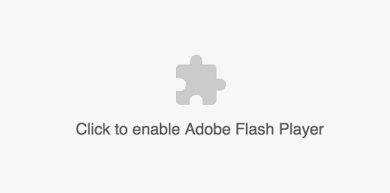Saying goodbye to Flash in Chrome
Saying goodbye to Flash in Chrome

I received a notification on the top of my Chrome window just now and thought I’d share this article for those that may have just disregarded it, or don’t fully understand the impact this will have on your current website. Google is basically saying that if your website hasn’t been updated in a while or if it has it enabled or embedded objects on the site then it isn’t compatible with any of the browsers starting after December of 2020. This basically means you need to contact us and have your site updated with the new open web technology to allow a more secure and free flowing site to be compatible with mobile and desktop devices. This will in turn increase your web presence and provide a better audience for you as well. Here’s the article below:
For 20 years, Flash has helped shape the way that you play games, watch videos and run applications on the web. But over the last few years, Flash has become less common. Three years ago, 80 percent of desktop Chrome users visited a site with Flash each day. Today usage is only 17 percent and continues to decline.
This trend reveals that sites are migrating to open web technologies, which are faster and more power-efficient than Flash. They’re also more secure, so you can be safer while shopping, banking, or reading sensitive documents. They also work on both mobile and desktop, so you can visit your favorite site anywhere.
These open web technologies became the default experience for Chrome late last year when sites started needing to ask your permission to run Flash. Chrome will continue phasing out Flash over the next few years, first by asking for your permission to run Flash in more situations, and eventually disabling it by default. We will remove it completely from Chrome toward the end of 2020.
If you regularly visit a site that uses Flash today, you may be wondering how this affects you. If the site migrates to open web standards, you shouldn’t notice much difference except that you’ll no longer see prompts to run Flash on that site. If the site continues to use Flash, and you give the site permission to run it, it will work through the end of 2020.
It’s taken a lot of close work with Adobe, other browsers, and major publishers to make sure the web is ready for this change. We’re supportive of Adobe’s announcement today, and we look forward to working with everyone to make the web even better. ”
Original Post: by Anthony LaForge, Product Manager, Google Chrome
Original Post: Published Jul 25th, 2017
Original Post: https://www.blog.google/products/chrome/saying-goodbye-flash-chrome/

